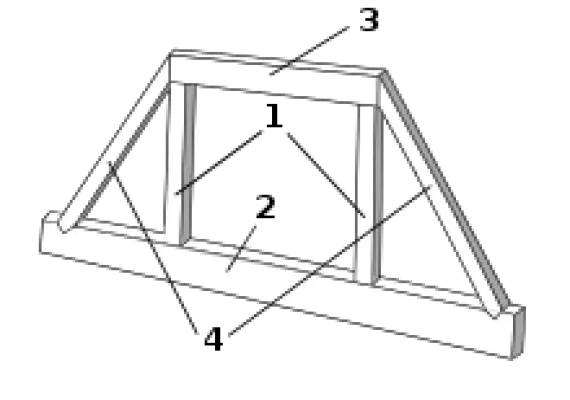Glulam Beam Weight; Glulam Vs Steel Beams
Glulam Beam Weight; Glulam Vs Steel Beams
What is Glulam Beam? Glulam Beam Weight
Glulam, or glued laminated timber, is an engineered wood product made by bonding together individual pieces of lumber or laminations with durable, moisture-resistant structural adhesives. The laminations are placed side by side and bonded in a long line to create large, straight, and strong beams for use as structural members in buildings.
Glulam is around 36 pounds per cubic foot, which translates to around 3 pounds per board foot. The weight of glulam varies depending on the size of the beam (width, height, and length). Typically, glulam beams can span up to 100 feet and support up to 50,000 pounds. A common residential glulam beam size is a 3 1/2″ X 14″ beam, which would weigh approximately 22 pounds per linear foot.
Compared to steel, glulam has a higher strength-to-weight ratio – it has around 3 times the strength per unit weight of steel. This makes glulam a lighter yet stronger alternative for long spans and heavy loads. The lighter weight also makes glulam easier to transport and handle on site.
Glulam beam weights can be calculated using various span tables provided by manufacturers or through online glulam beam weight calculators. These tools allow you to input the length, width, and depth of the beam to estimate its total weight for structural design and handling purposes.
Glulam is manufactured to tight quality control standards under controlled conditions, resulting in consistent material properties. The finished glulam members are stronger, straighter, and more uniform than solid wood beams cut from a single piece of lumber.
Glulam’s strength, lightweight, and versatility make it an ideal building material for long spans in commercial, residential, and industrial buildings.
Glulam Vs Steel Beams – Comparison Of Strength, Weight, And Cost
Glulam competes well with steel in many structural applications due to its higher strength-to-weight ratio, lighter weight for ease of construction, and economy for long span applications. The renewable nature and aesthetic appeal of wood are added advantages over steel in many projects.
Here is a comparison of glulam and steel beams in terms of strength, weight, and cost:
Strength
- Glulam has a higher strength-to-weight ratio than steel. It can support similar loads as steel using less material.
- The allowable bending stress of glulam ranges from 1,800 psi to 2,800 psi depending on grade. Steel allowable bending stress is around 20,000 psi.
- Glulam strength properties do not degrade over time like steel. It maintains its strength for the life of the structure.
Weight
- Glulam weighs approximately 3 lbs/bf compared to steel at around 490 lbs/bf.
- A glulam beam will be around 1/6th the weight of a comparable steel beam.
- The lighter weight makes glulam easier to transport, lift into place, and reduce foundation requirements.
- Glulam allowable bending stress ranges from 1,800-2,800 psi depending on grade. Modulus of elasticity is around 2,000,000 psi.
Cost
- Glulam beams typically cost $3-$5 per board foot depending on size and grade.
- Steel beams cost around $0.90 per pound. A comparable steel beam may cost $2-$3.50/bf.
- For long span applications, glulam is usually more economical than steel. It competes effectively with steel up to 80-100 foot spans. For spans over 60′-80′, glulam becomes more economical than steel. It competes effectively on cost up to 100 foot spans.
- Glulam can be left exposed for architectural effects, reducing interior finish costs. Steel often requires additional fireproofing.
Glulam Specifications – Design Values, Common Sizes, And Material Standards
Glulam offers reliable strength properties and is manufactured under controlled conditions to provide straight, high-quality engineered beams that meet industry standards. A wide range of beam configurations, wood species, and finishes are available.
Here are some key details on glulam specifications, sizes, and standards:
Design Values
- Bending stress: 1,800-2,800 psi depending on grade
- Modulus of elasticity: 1.6-2.0 x 106 psi
- Shear strength: 140-285 psi
- Compression perpendicular to grain: 370-570 psi
Common Sizes
- Depth: Most commonly 6″ to 48″
- Width: 2″ to 10″ for common beams
- Length: Up to 140′ available; typical max 100′
Standards
- Manufactured to meet ANSI/AITC A190.1 standard
- Materials meet requirements of DOC PS 20 and PS 56
- Adhesives conform to AITC 119 or ASTM D2559
- Laminating combination symbol indicates laminations and adhesives used
Features
- Straight and free from warp or twist
- Free of knots, splits and checks
- Made from Douglas Fir, Southern Pine, Hem-Fir, Spruce-Pine-Fir, or Western Cedars
Finishes
- Can be sanded smooth or surfaced with architectural finishes
- Preservatives and fire retardant treatments available
